USS Bennington’s VB-82 Helldivers versus the IJN’s Yamato

“Nearly all [Beast] stories depend for their success on Jack killing the Giant, Beowulf or St. George slaying the Dragon… That is their inner grammar, and the whole shape of the story leads towards it.”
A. N. Wilson
The Japanese battleship Yamato displaced 72,800 tons when fully loaded and only 2 of her class were built; neither survived the war. The Curtis SB2C Helldiver weighed a little over 8 tons fully loaded and over 7,000 were built; most survived the war. If placed end to end, some twenty-five or so Helldivers could fit on Yamato’s 263m long deck. The Yamato was armed with nine 46cm main guns, six 15.5cm guns, twenty-four 12.7cm guns, one hundred and sixty-two 2.5cm AA guns and four 13.2mm AA guns. One Helldiver carried two 2,000lb bombs, two 500lb bombs, eight 5″ rockets and two 20mm cannon as well as two 0.30″ machine guns.
The battleship, the preeminent symbol of naval pride and the most powerful weapons systems of their time (though that time had long passed) and the dive-bomber, an obsolete idea from almost before it was developed.
The Yamato; 大和, “Great Harmony”

When it was laid down in 1937 as one of the last of the great battleships, the Imperial Japanese Navy’s Yamato could trace its lineage back almost 150 years to Horatio Nelson’s HMS Victory at the Battle of Trafalgar in 1805. The big gun had owned the ocean for 200 years and its importance was well demonstrated by mechanisms such as the Naval Defence Act of 1889 which required Britain’s Royal Navy maintain battleship parity with the next two navies combined.
By the late 1930’s and into the first years of the war, the Royal Navy’s King George V class, the French Richelieu class, the German’s Bismark class, the Italian Littorio class, the US Iowa class and the Japanese Yamato class of battleships all represented some of the greatest technological advances in range-finding, engine power, armour and metallurgy, communications and ocean going vessel design.
And yet… the battleship was already obsolete; on 14 November, 1910 the US Navy had successfully launched an aeroplane from a ship, and aeroplanes can carry bombs and torpedoes.
A Thousand Bombers, for One Battleship
“A thousand bombers could be built at the same cost as one battleship, and [they] could sink that battleship”
Brigadier General William L. Mitchell
As early as the 1920’s though, the concept of the capital ship was questioned by those who recognised that armed aircraft meant a ship could no longer defend itself, by itself. Perhaps the most vocal of the air power proponents was Brigadier General William “Billy” Mitchell in the United States. He demonstrated in a series of exercises in 1921 that aircraft could sink ships, and large ones at that and while he didn’t win any friends in doing so – especially in the Navy – he was right.
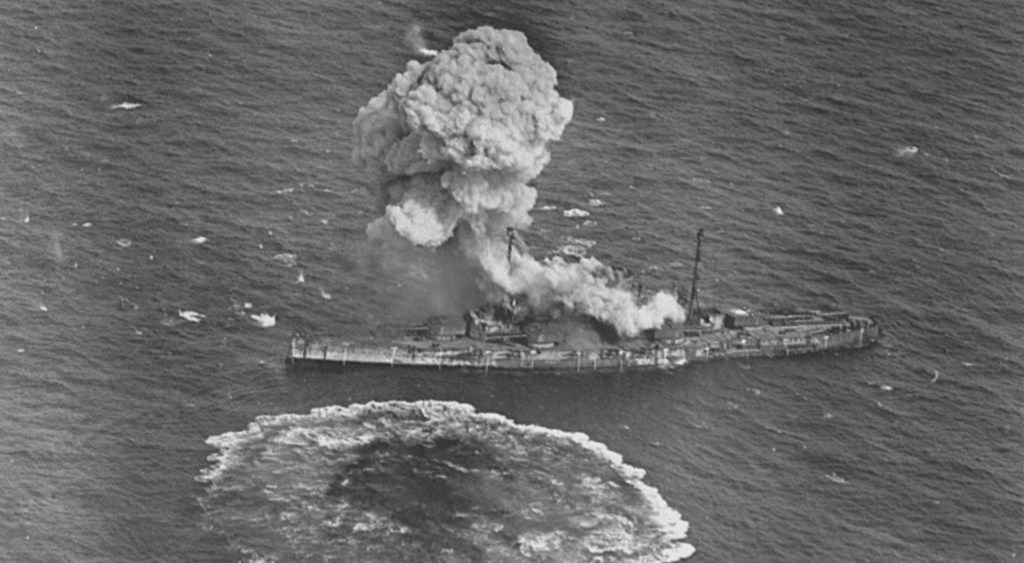
Nonetheless, and despite mounting evidence to the contrary, intra-service rivalry as well as the internal political and externally nationalistic power of the big gun continued to outweigh the demonstrable effectiveness of aircraft carriers, and do so in inverse proportion to the range each could project its might. For every aircraft carrier laid down in the years between the wars, there were two battleships.
Meanwhile aircraft technology, aircraft carrier technology, close air support tactics, aircraft-carrier battle group strategic theory, and carrier operations were all gaining momentum…
The Kit; Accurate Miniatures 1/48 SB2C-4 Helldiver

The Interior

Dive-Bombing; a Matter of Point and Shoot

While an adage in naval aviation says “if you want to make holes in ships use bombs, if you want to sink them use torpedoes” to do so requires the torpedo bomber delivering it to fly straight, level and at a proscribed airspeed coincidently long enough for the increasing number of anti-aircraft weaponry aboard naval vessels to shoot it own. That’s if the protective fighters the enemy would have stationed somewhere above as an additional counter-measure didn’t shoot them down first.
At Midway this was amply demonstrated with the disaster that befell VT-8 (the result, actually, of their escorting Wildcats having returned to their carrier due to low fuel). However, the SBD Dauntless dive bombers scored such success in sinking four Japanese carriers that their worth was unquestioned.
Dive bombing offers the tantalising benefits of accuracy, efficacy and economy in a small, inexpensive and versatile package. It is after all a simple concept; aim the entire airplane at the target at a steep enough angle that the anti-aircraft guns on the target ship can’t elevate enough to shoot back, use the aircraft’s own guns (and rockets) to observe the exact point of aim and at the last minute, when the enemy’s opportunity for evasive manoeuvre has expired, simply release the bomb(s), pull out of the dive and use the accumulated airspeed to get out of the killing zone. Fast.
Curtis SB2C Helldiver

Curtis’ SB2C Helldiver was designed to do more of everything the Dauntless could already accomplish. It was supposed to be faster, capable of carrying more ordnance, and better armed. As originally delivered though, it was woefully under-powered and as both the British and Australians later reported when cancelling their orders, it had appalling handling. It was unpopular with aircrews as well as maintenance teams and crashed so frequently on USS Yorktown’s deck that at one point its Commander, Captain Joseph Clark simply replaced them with SBD’s and left his ship’s allocated Helldivers behind when he took his carrier to sea.
The Helldiver was a victim of its design compromises, the worst of which was a shortened fuselage made necessary in order to fit the elevators on Essex class carriers. This led to its poor handling in general, and created the requirement to maintain a high approach speed to ensure the rudder didn’t stall. Eventually though, the availability of the R-2600-20 Twin Cyclone engine gave it the power it needed, and a significant weight reduction in the -4 and -5 models created a useable aircraft; and as events in April 1945 were prove, it could win battles. It never did match the SBD’s range and when Grumman Hellcats and Vought Corsairs became able to deliver nearly the same payload, while being able to defend themselves, Helldiver numbers on carriers were reduced in favour of fighter-bombers. The dive-bomber was essentially obsolete as a class.
The Airframe Assembly

The Paint Scheme; Shades of Grey
The images above caused me much consternation and delayed the painting stage by a week or two. Elsewhere I have written a full article on my reasoning, you can find it here;
“Shades of Grey” the argument for repaint.
The short version though; USN aircraft were painted in one of two ways; either the four-colour scheme or an overall Glossy Sea Blue. The images above seemed to me to show neither. Ultimately, I deduced that – in my opinion – at least some of the Helldivers on the Bennington were originally painted in the four-colour scheme and that they were subsequently repainted with GSB up to but not including the Dark Sea Blue uppers and wings.

There is of course an alternate explanation (for a full read of the discussion on the Hyperscale discussion board Plane Talking, click here) for at least some of what can be seen in the pics above, that being something to do with the reflectivity of the paint. On balance though I couldn’t reconcile everything I see in the contemporary pics of #95 and #83 above with the reflectivity explanation, at least to the same extent as I can for the repaint hypothesis.
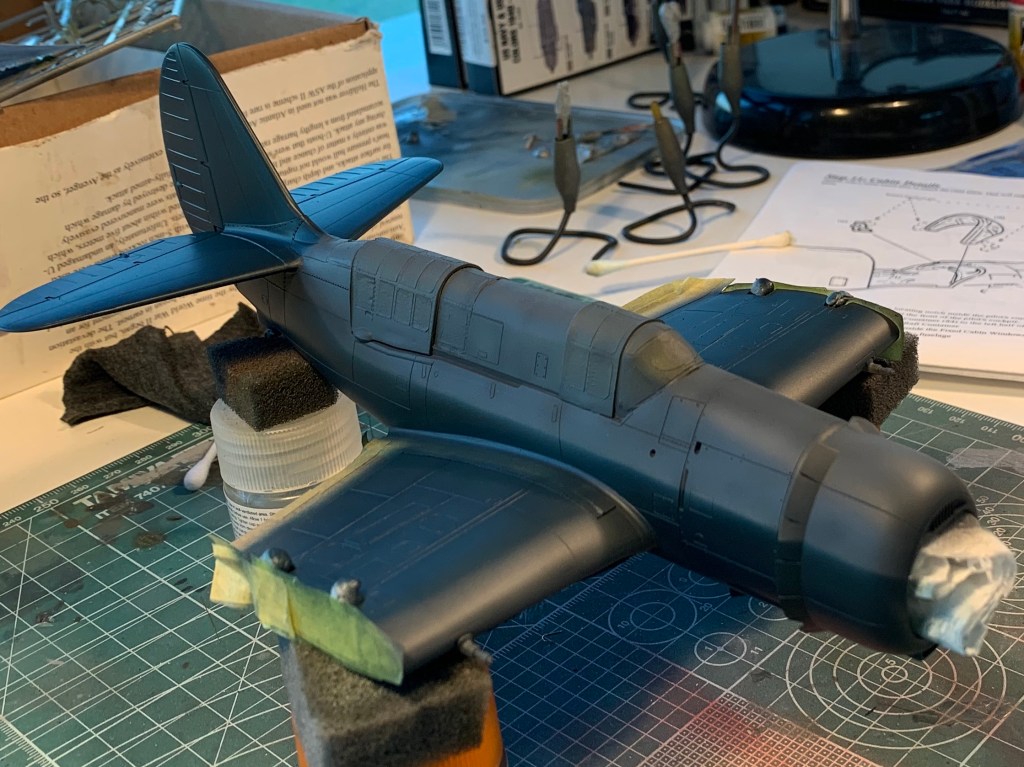
The Battle of the East China Sea

When Lt. Cdr. Hugh Wood, leader of USS Bennington’s dive bombing squadron VB-82 suddenly wrenched his SB2C-4 Helldiver, marked with the squadron code #81, hard over into cloud cover at 20,000ft and immediately thereafter diving to attack, he did it so sharply that his wingman was unable to follow him. Only Lieutenant (JG) Francis R. Ferry flying #83 and Lieutenant (JG) Edward A. Sieber in #84 were able to follow on what was the first strike that day against the Yamato, the largest battleship in the world.

The Imperial Japanese Navy’s response to the US invasion of Okinawa was to organise and launch Operation Ten-Go. Yamato and nine escorts (the cruiser Yahagi and eight destroyers) would sail at once to Okinawa to attack the Allied forces assembled there. Yamato would be beached to act as an unsinkable gun emplacement and continue to fight until destroyed. Consequently the ships were supposed to take aboard only enough fuel for a one way voyage to Okinawa. Designated the “Surface Special Attack Force“, the ships left Tokuyama at 1520 on 6 April.
Unfortunately for the Japanese, the Allies had intercepted and decoded their radio transmissions and were fully aware of Operation Ten-Go. Further confirmation of Japanese intentions came around 2000hrs that evening when the Surface Special Attack Force was spotted by two American submarines. Both reported Yamato’s position to the main American carrier strike force but neither could attack because of the speed of the Japanese ships.
So it was that at around 1000hrs the next day, on 7th April 1945, Wood led three flights (in all, eleven Helldivers launched from Bennington that morning) of VB-82 to join aircraft from the Hornet as the first wave in a series of attacks against theYamato. In all, carriers Hornet, Bennington, Belleau Wood, San Jacinto, Essex, Bunker Hill and Bataan launched throughout the morning.
First on scene at around 1230hrs were Hellcats and Corsairs from both Okinawa and the Hornet, fighters sent to clear the skies above the Yamato and her accompanying vessels of protective Japanese fighters. There were none however, the Yamato was quite literally sitting duck. The Hellcats proved their offensive worth with staffing attacks which damaged Yamato’s AA capability. Then, a few minutes later the VB-82 dive bombers arrived.
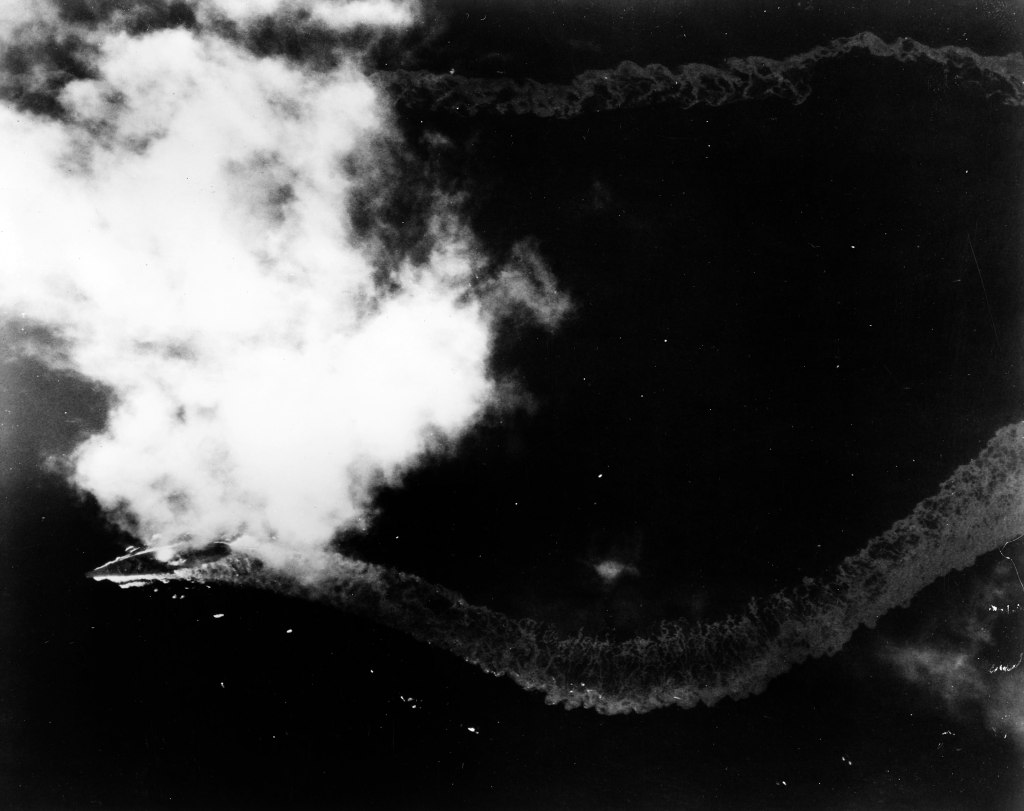
“We were in a 90-degree dive, and I was getting ready for a salvo, shooting everything at once: eight rockets, 20-millimeter cannons, two 500-pound bombs, and two 1,000-pound semi-armor-piercing bombs. Then I pulled out. A dive takes less than a minute, but you’d be surprised how long a minute can be. I thought I hit the No. 3 turret. We each probably hit a turret. I know we created havoc.”
Lt. (JG) Edward A. Sieber, VB-82 USS Bennington
All three reportedly hit the Yamato with two bombs each. Pulling out of his dive at 1,000ft, Sieber reports…
“[after levelling out] I flew a bumblebee pattern, which makes it tough for their gunners. If you see a pattern of tracers, that meant they were homing in on you, so I told my gunner, Moe Santaferra, ‘If you see a pattern, let me know.’ That way he could say, ‘Hey, climb or turn or something.’ He didn’t say anything until later when he said, ‘There was no pattern. There was just fire coming from everywhere.’”
Lt. (JG) Edward Sieber
Nearby and only minutes later the Yahagi, which was steaming away from the Yamato in an attempt to draw the attention of the attacking aircraft away form the flagship was in fact too successful in its aim and was struck by two torpedoes launched by the few Avengers from the Hornet which chased it. The Yahagi sank soon after. In this first wave the Yamato was struck by two bombs and one torpedo. Two destroyers and the light cruiser were sunk or damaged to the point of taking no further action that day.
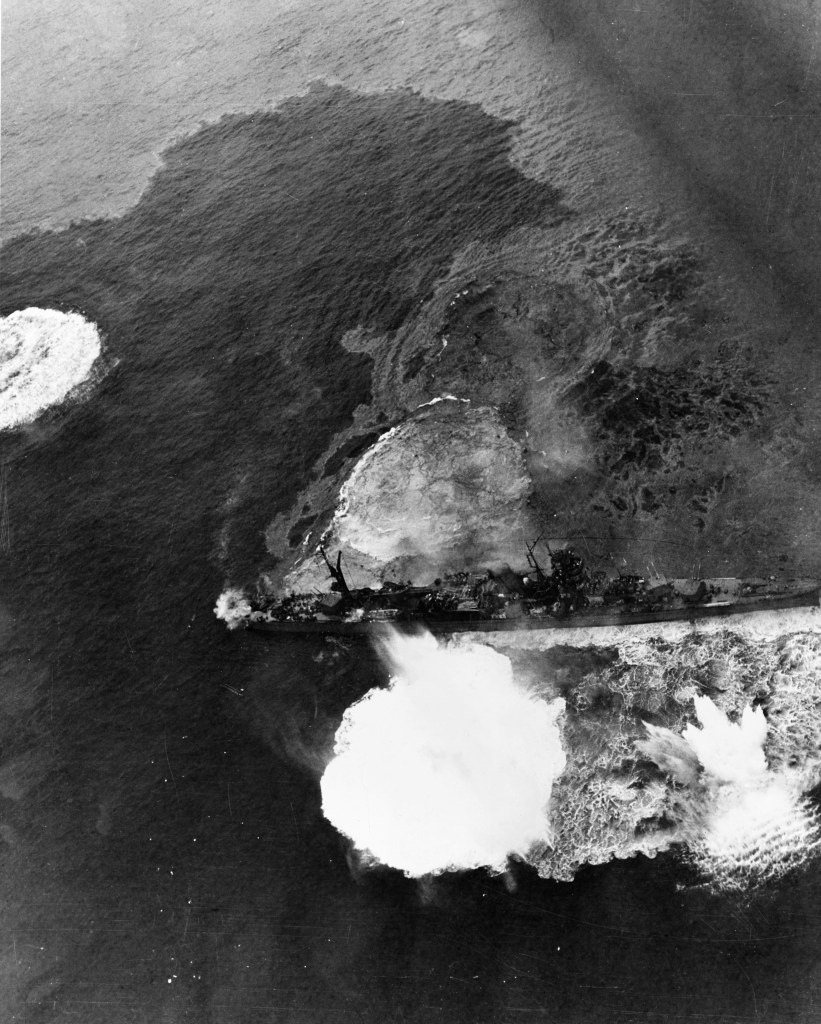
Between 13:20 and 14:15, the second and third waves of approximately 110 U.S. aircraft attacked, scoring at least eight torpedo hits and up to fifteen bomb strikes on the Yamato. By now listing heavily to port, and with its water damage-control station destroyed it was unable to counter-flood to correct the list. At 13:33 the damage control team counter-flooded both starboard engine and boiler rooms drowning several hundred crewmen who were not given an opportunity to exit their stations prior to the flooding. Now, with engines out of action and main rudder jammed the Yamato was almost defenceless.
The crippled Yamato, now without its fire direction, its anti-aircraft capability severely reduced, sitting low in the water and now making only about 10kts, faced the fourth wave of Avengers and Helldivers. The torpedo attacks were directed from 60 degrees to port. The Yamato tried to make a sharp turn to port but was by now so damaged that this was impossible and was struck by three torpedoes in its port side which jammed her auxiliary rudder in position hard port.

At 1402 the fleet commander, Admiral Itō ordered the crew to abandon ship when it was clear the end was near. He also called for the remaining ships to begin rescuing survivors. Only three minutes later though, Yamato was stopped dead in the water and began a roll to port that no amount of counter flooding would ever halt.
Just fifteen minutes later at 1420 the battleship capsized and just three minutes later it exploded, caused presumably by the fires ignited by bomb hits reached the main magazines.

The surviving destroyers attempted to rescue as many survivors as possible before leaving the scene of the disaster that had befallen them. There were conflicting reports of US aircraft staffing the rescue attempts and aircraft halting their attacks to facilitate the rescue. Only four destroyers returned to Japan; one of them, the Suzutsuki steamed in reverse the entire way as its bow had been blown off.
The mission was a failure, as it was bound to be, and despite huge loss of life as well as the loss of Japan’s last capitol ship, their sacrifice was in the end for naught; while the battle for Okinawa raged on until early July, it did so for the defenders without any further support from the home islands. After the loss of the Yamato the Japanese no longer pursued the offensive – indeed they had no ships left with which to do so – and instead began to prepare for the defence of the home islands in the face of its impending invasion by the United States and Allied Nations.
The Markings

The Weathering
The Finished Model
The final assembly was, as usual for me a nerve wracking process; in this case though, the attachment of the wings filled me with apprehension. Nonetheless I worked through my usual process of finishing the undersides completely before turning the model onto its wheels and completing the upper side.
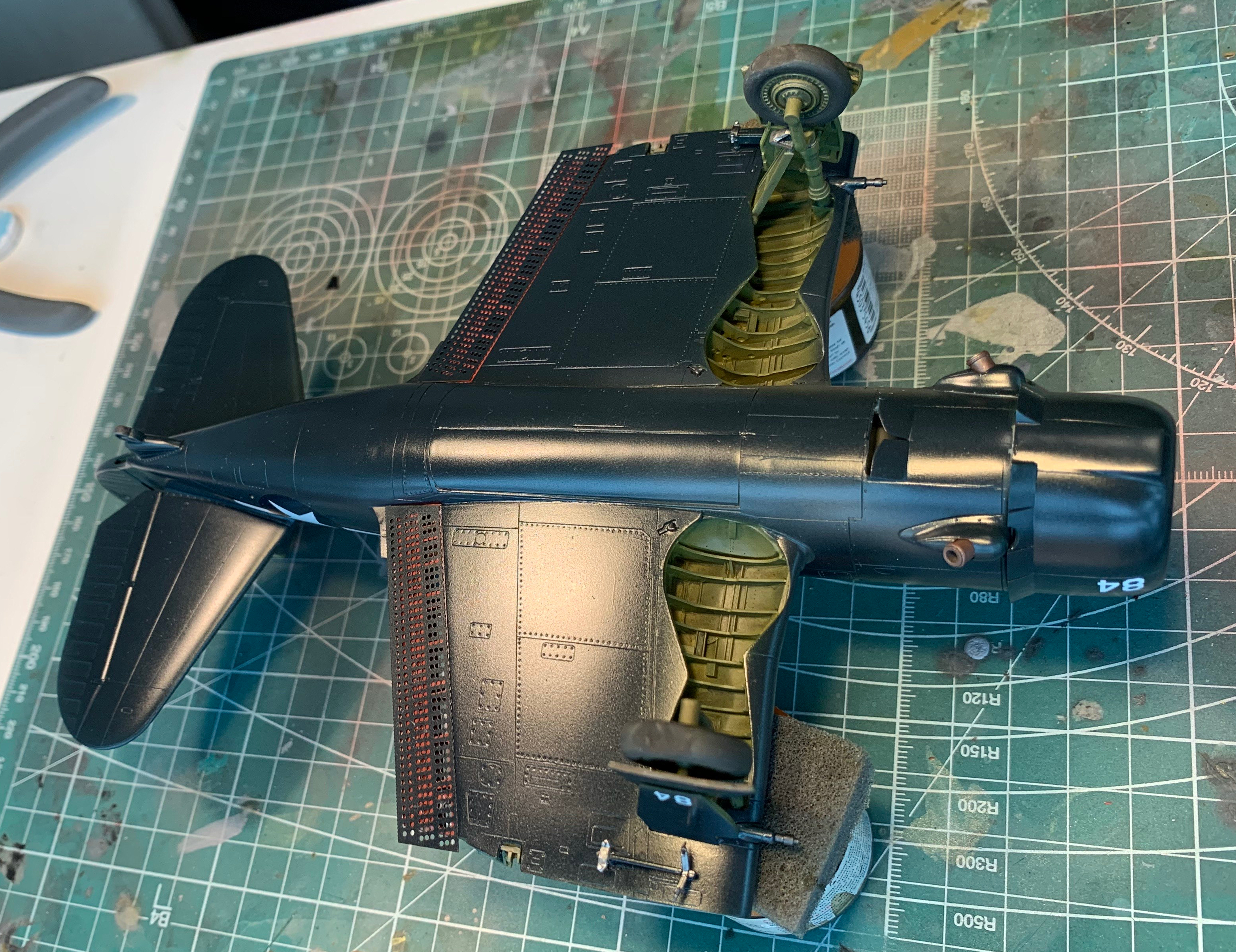

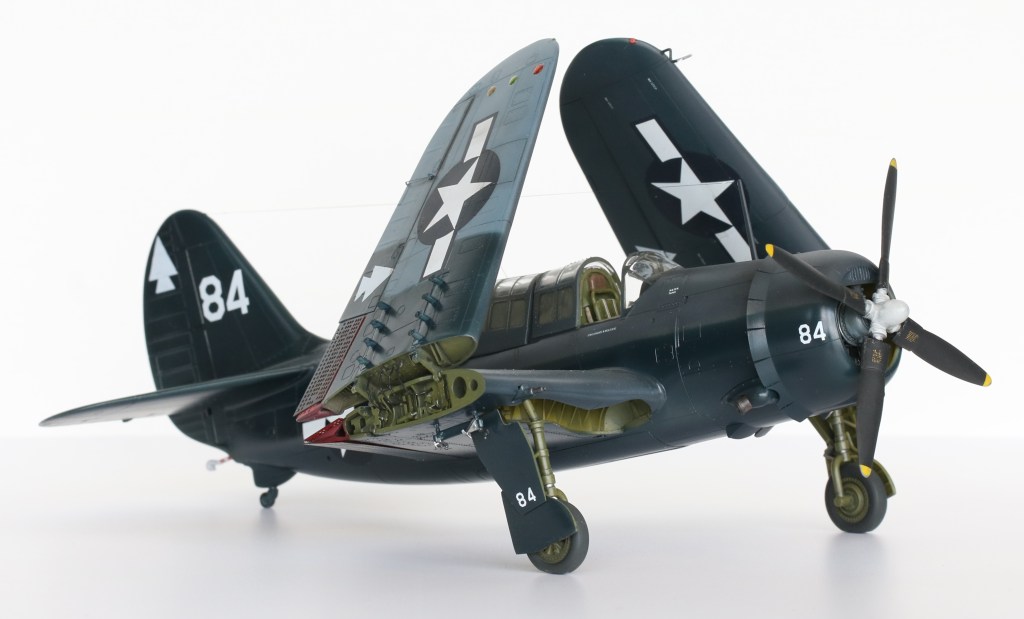
Epilogue
I briefly considered using “Beauty and the Beast” as the title for this piece. But, apart from it being such an obvious and hackneyed metaphor, ultimately it doesn’t fit. The Yamota wasn’t beautiful though there was an elegant purposefulness in its lines. Likewise, the Helldiver wasn’t a Beast despite its big tail and chubby fuselage. And, while it had none of the delicacy in its design as its predecessor the Dauntless possessed, it did have something, I like it.
I find it ironic that in sinking the Yamato and [again] demonstrating dive-bombing’s efficacy, the instruments of its destruction became obsolete in doing so. Dive-bombing was dangerous and required of its crews that they fly aircraft which could not effectively protect themselves. Mustangs, Spitfires, Corsairs, Hellcats, Thunderbolts had all proved themselves capable of effective surface attack in all theatres by this stage of the war and all had the ability to protect themselves – indeed go on the offensive – after doing so. They didn’t need escorts, and they only needed one crew member.
So, on the very same day the 15th Fighter Group completed its first VLR mission, and soon thereafter included ground attack as an element of their missions, Billy Mitchell’s claim made 25 years earlier was proved again to be true; that in fact not even a thousand bombers were needed to sink a battleship. When the Yamato, which was the last battleship to be sunk in action during the Second World War, settled on the bottom of the East China Sea; and the final Helldiver, the last of the purpose built dive-bombers was recovered by its carrier, both types had already ceased to have any real purpose.
Gallery

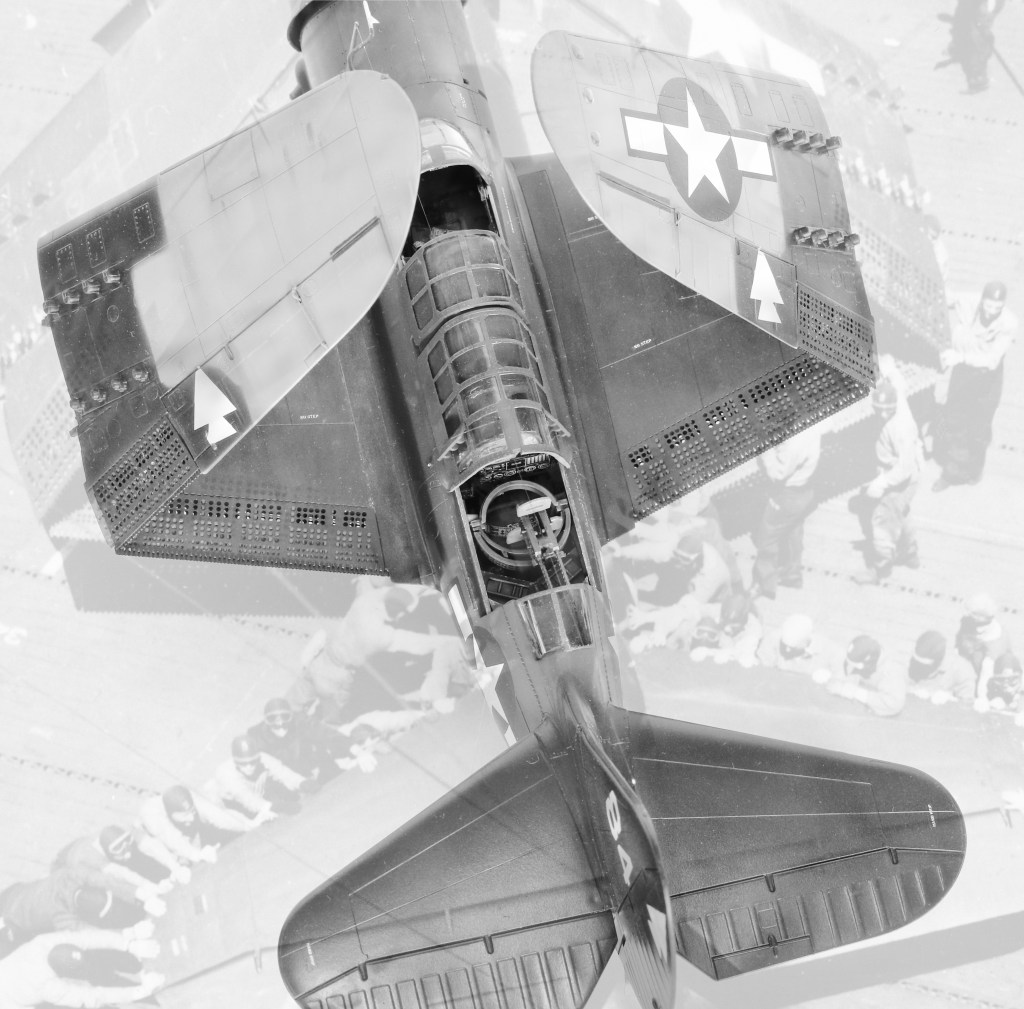
References and Credits
- https://en.wikipedia.org/wiki/Timeline_for_aircraft_carrier_service
- https://en.wikipedia.org/wiki/Dive_bomber
- https://en.wikipedia.org/wiki/List_of_aircraft_carriers_of_World_War_II
- https://en.wikipedia.org/wiki/List_of_battleships_of_World_War_II
- https://www.avgeekery.com/the-helldiver-haste-made-a-waste-of-this-world-war-ii-dive-bomber/
- https://www.news-press.com/story/news/local/2015/08/13/pilot-recalls-sinking-battleship-yamato-wwii-yamato-helldiver-vj-day/31644167/
- http://www.uss-bennington.org/stz-vb-82.html
Copyright
Copyright: I claim original work and Copyright 2020 for the text in this article and the photos of the model. As usual though, I am indebted for the material used in research listed above in the References and Credits section. Except where noted otherwise, I sourced all other images and photos from the internet and are used under fair-use. Any copyrighted images will be removed or credited forthwith upon request by its rightful owner.
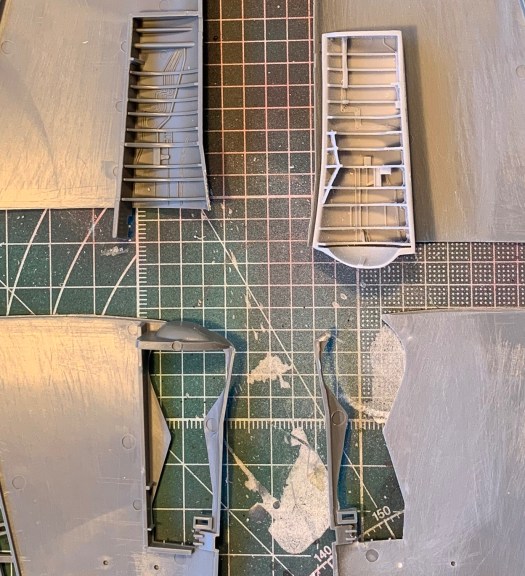








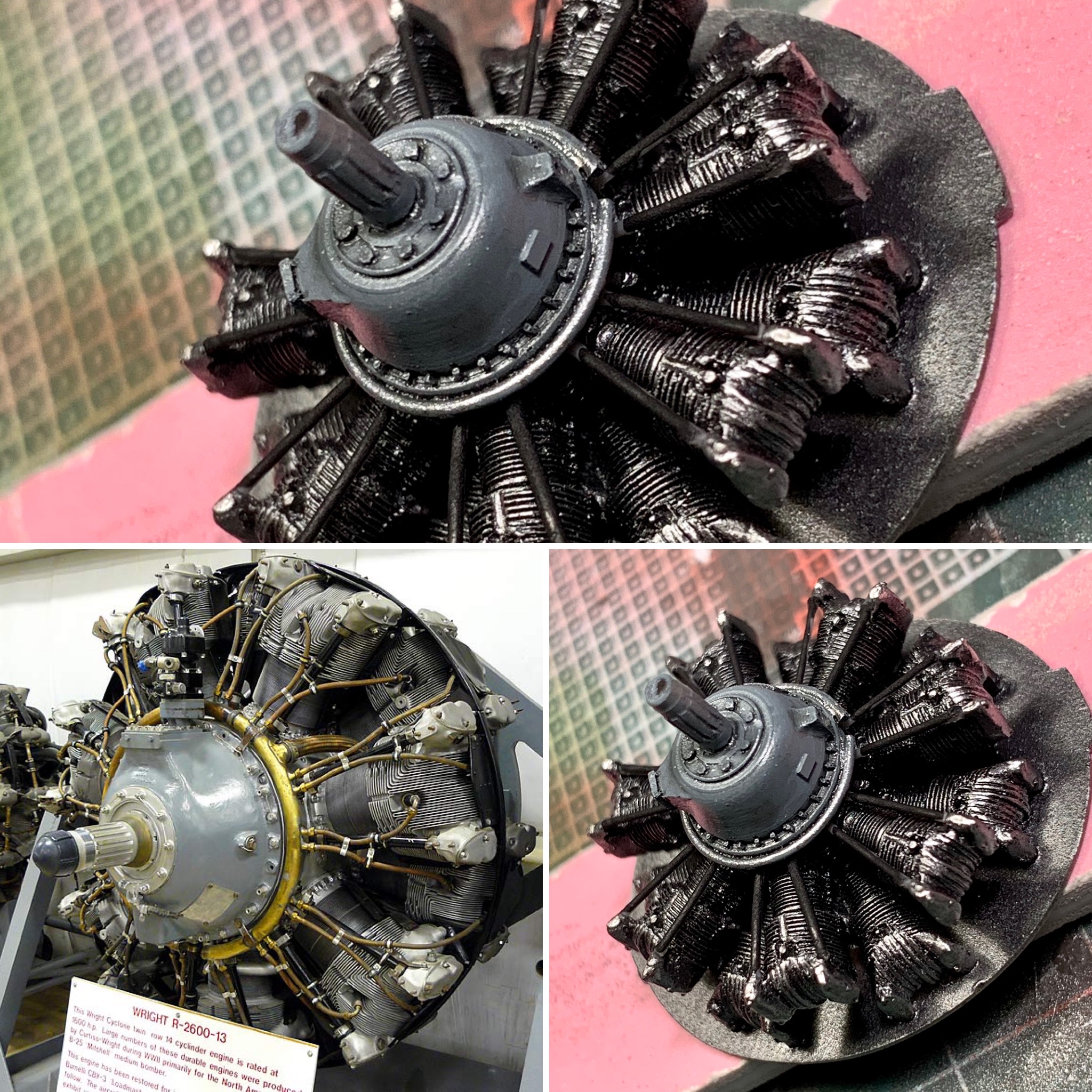


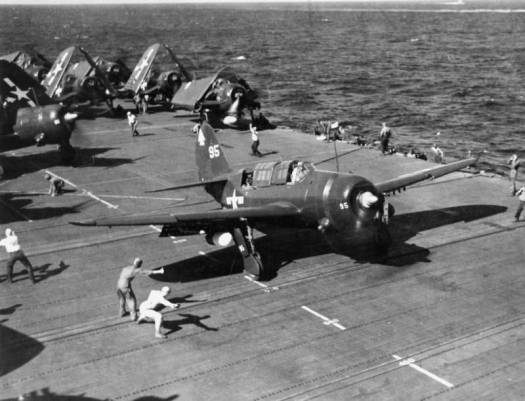








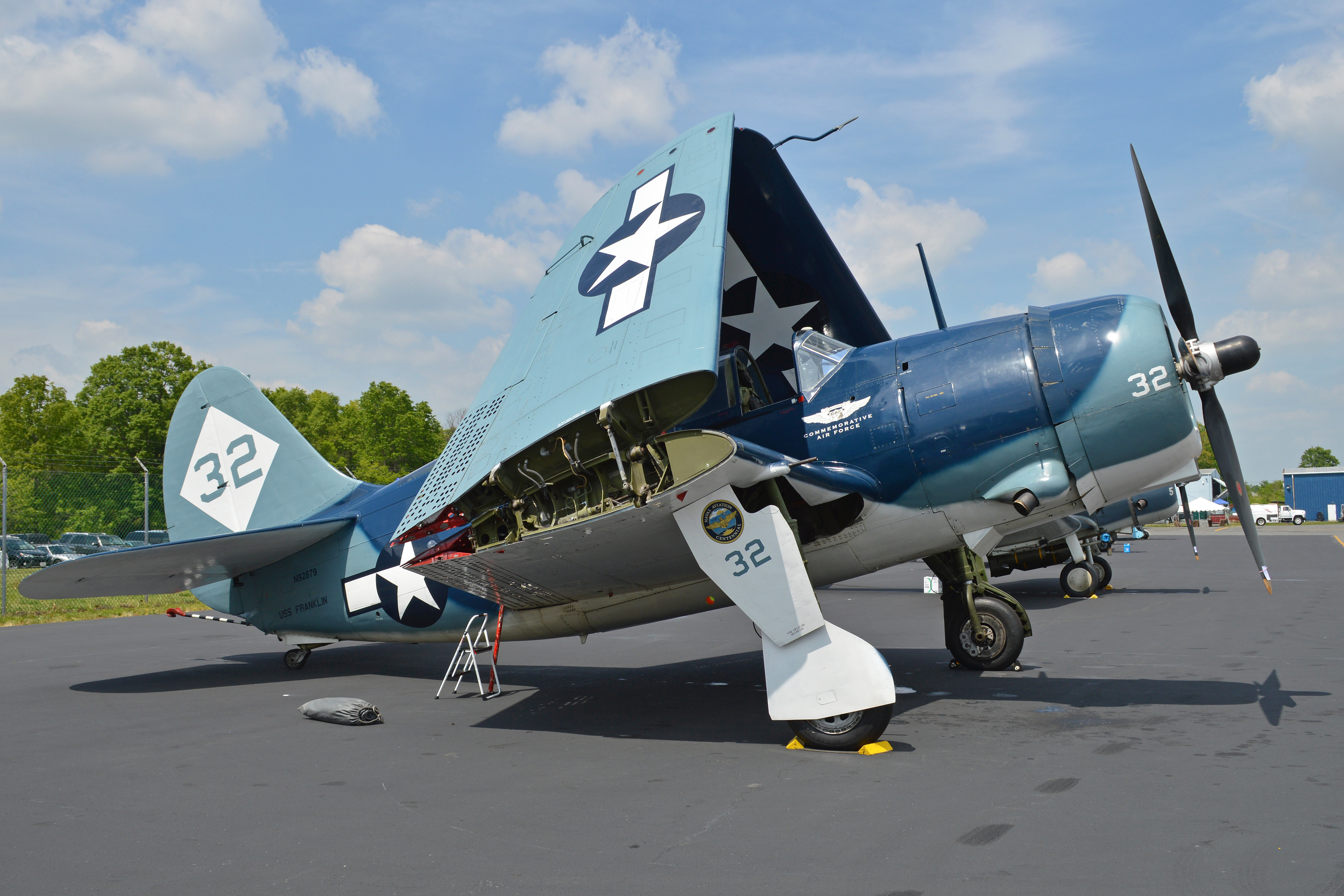


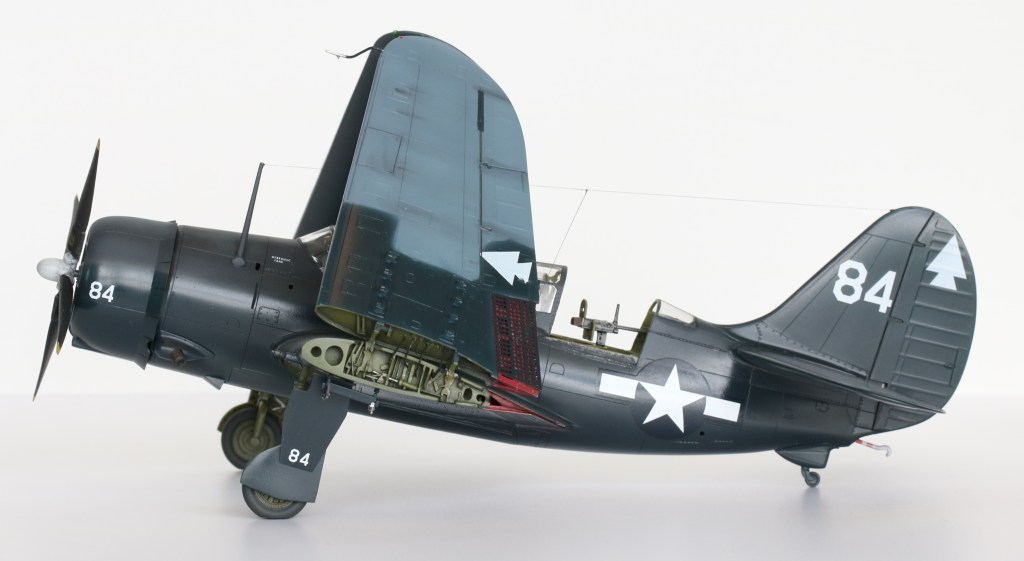





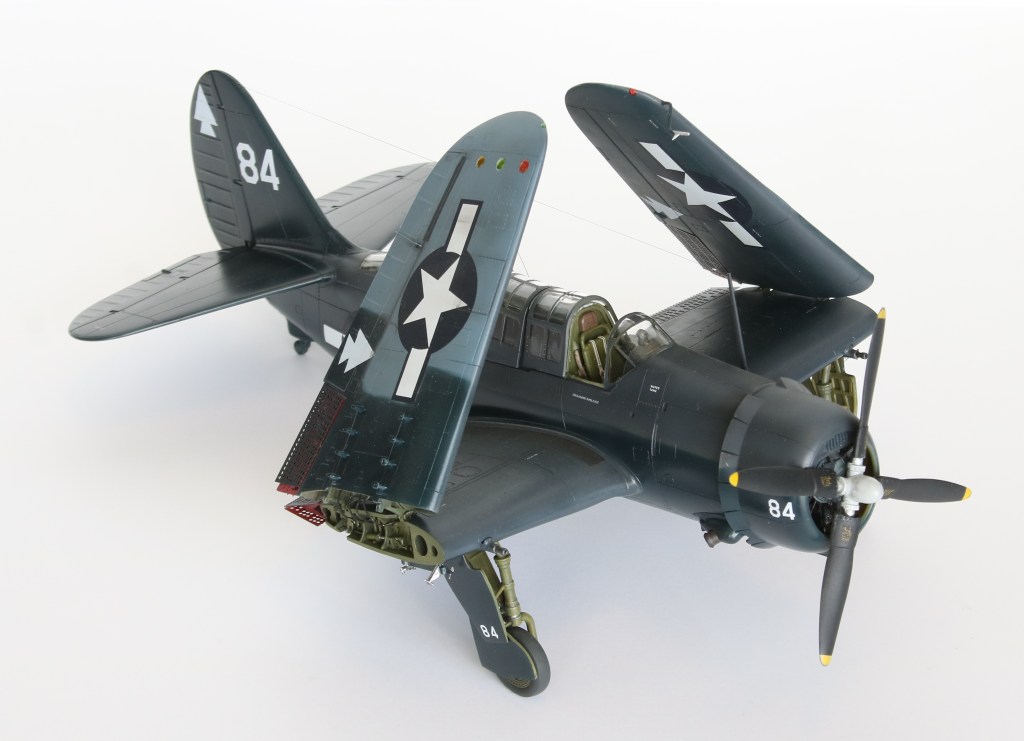

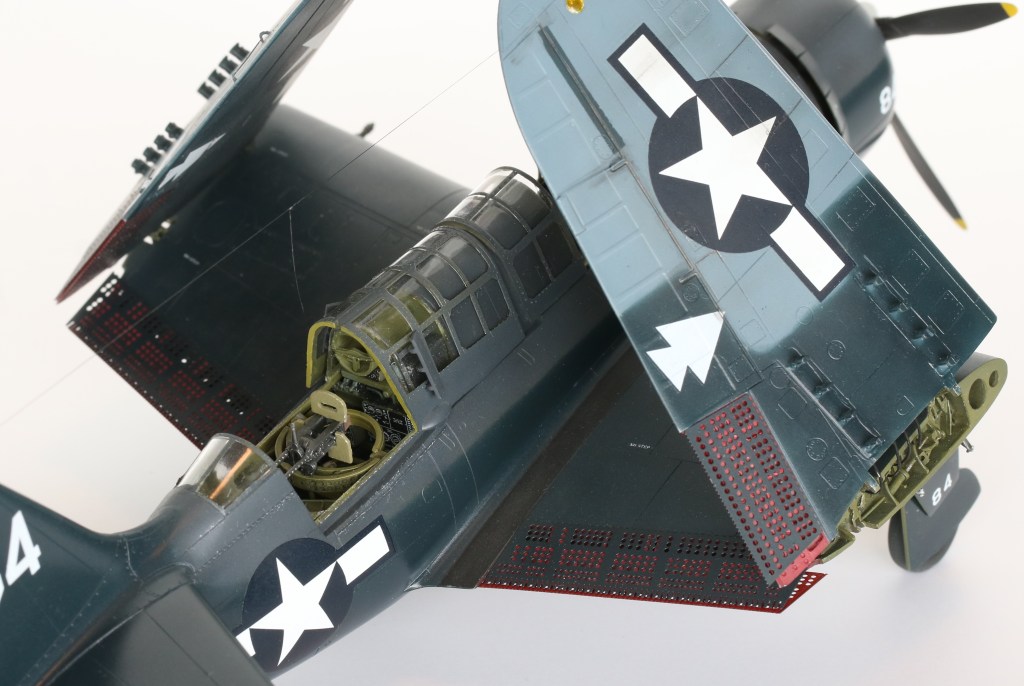
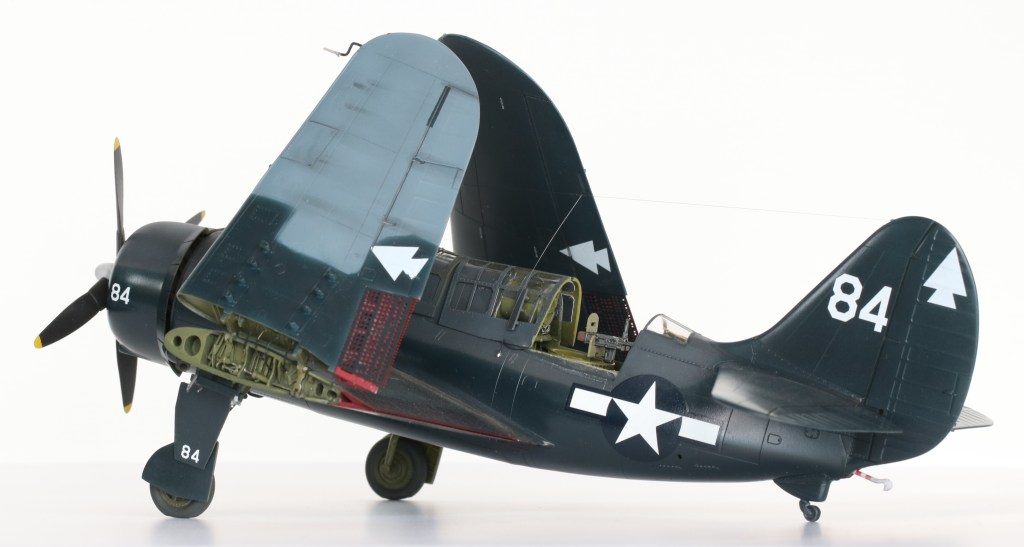




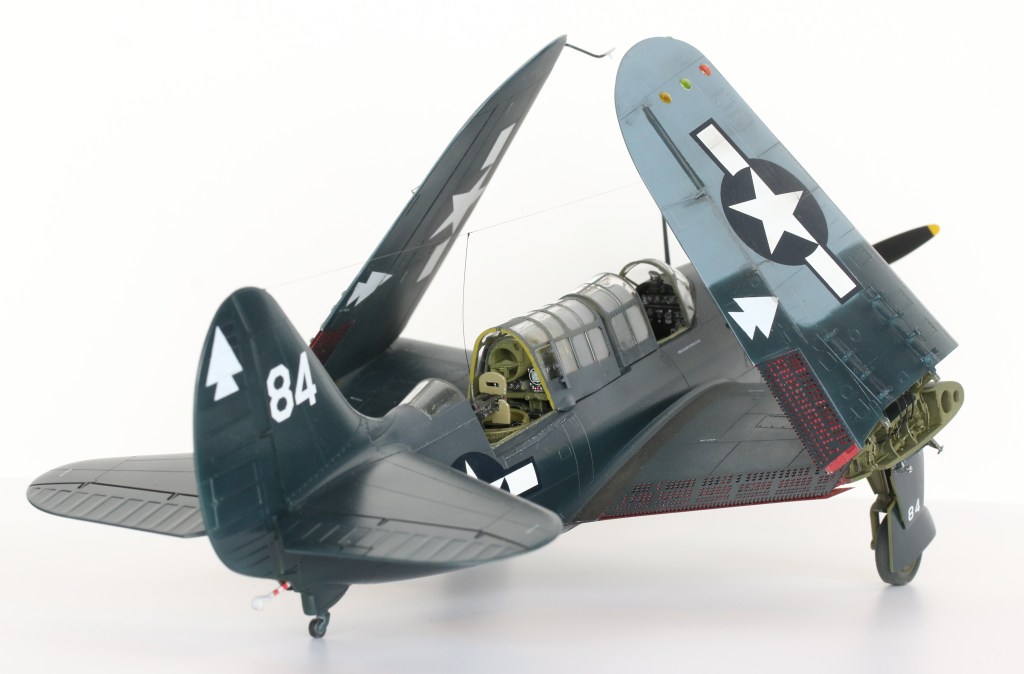

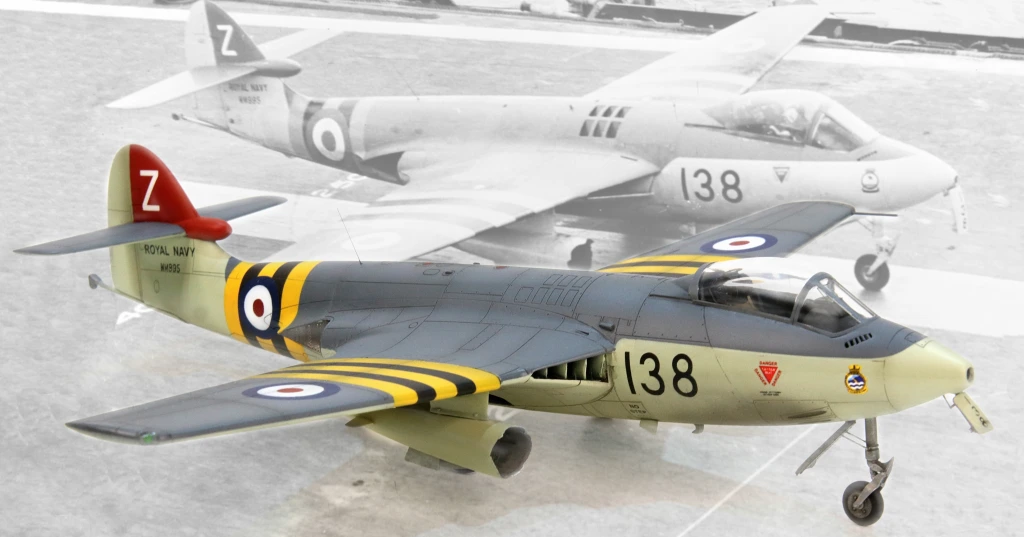



Leave a comment